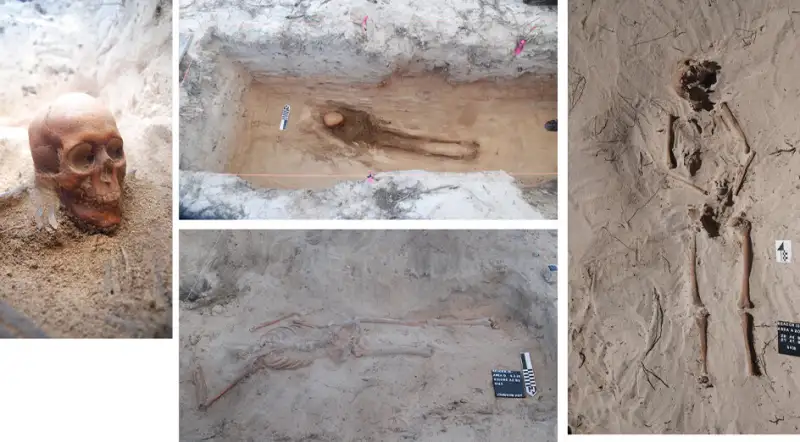After five years of archaeological research, an international team of experts led by archaeologists from The University of Western Australia and the Western Australian Museum has shed new light on the tragic Batavia maritime disaster and subsequent mutiny. The findings, published in Historical Archaeology, reveal a wealth of evidence that sheds new light on this haunting tale, including the unearthing of single and multiple graves, as well as evidence of survivors’ resistance to mutineers.
The Batavia, a ship belonging to the Dutch East India Company, was lost in 1629 off the coast of Western Australia’s Abrolhos Islands, and its story has captivated historians and adventurers for centuries. Lead author Professor Alistair Paterson, from UWA’s School of Social Sciences and the Oceans Institute, explained that the artifacts and gravesites offer insight into the survival landscape encountered by some of the earliest Europeans to visit Australia, and expand the focus beyond the Batavia wreck itself.
Professor Paterson explained that the team’s meticulous analysis had uncovered the remains of 12 victims, interred in both individual and mass graves, as well as evidence of a fierce struggle between survivors and a group of mutineers, and remnants of a possible gallows site where justice was served. The finds offer invaluable insight into the behavioral responses of survivors, including their initial movement from the wreck to nearby islands, the struggles they faced, and the shifting power dynamics among mutineers and survivors.
The excavation of human remains has also shed light on the treatment and burial practices of victims. The centrally located graves on Beacon Island suggest a functioning graveyard, potentially representing victims from the early days following the wreck. Other islands within the vicinity, such as Long (Seals) Island and West Wallabi Island, provide evidence of makeshift weapons, the presence of resistance factions, and structures associated with the survivors.
The landscape on Long Island contains a concentration of iron fastenings believed to be the gallows site where mutineers were executed, reflecting the company’s attempt to establish order. Future research in a new ARC Project, “Mobilizing Dutch East India Company collections for new global stories,” will involve further forensic analysis of human remains, including physical assessment, stable-isotope technology, DNA studies, and new historical research.
Source: University of Western Australia
